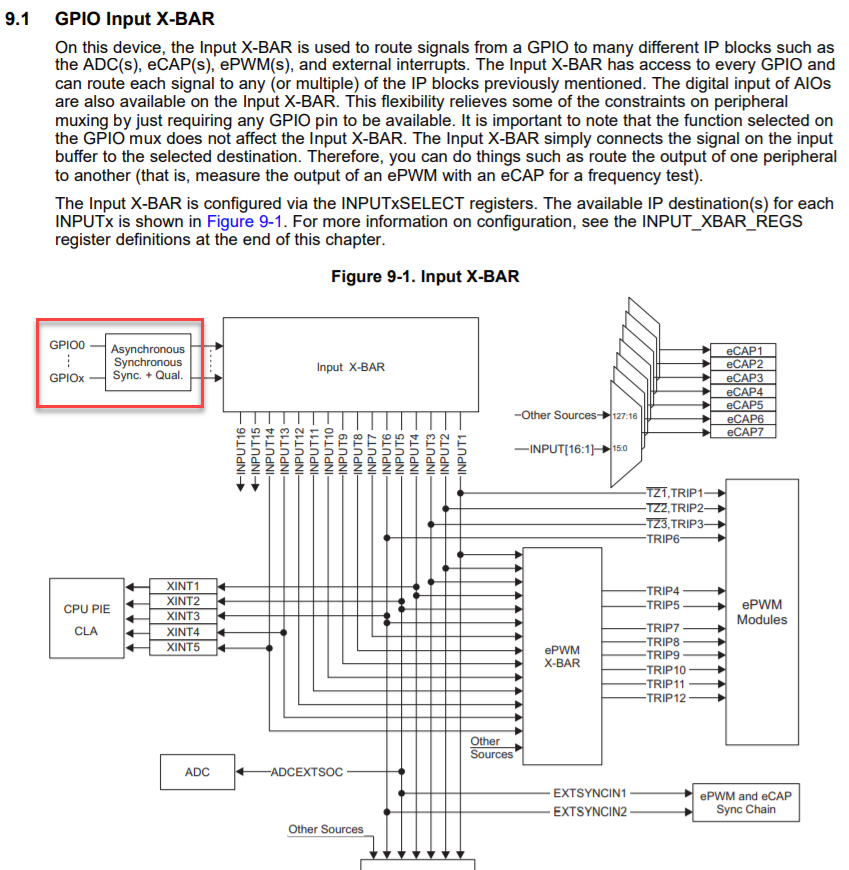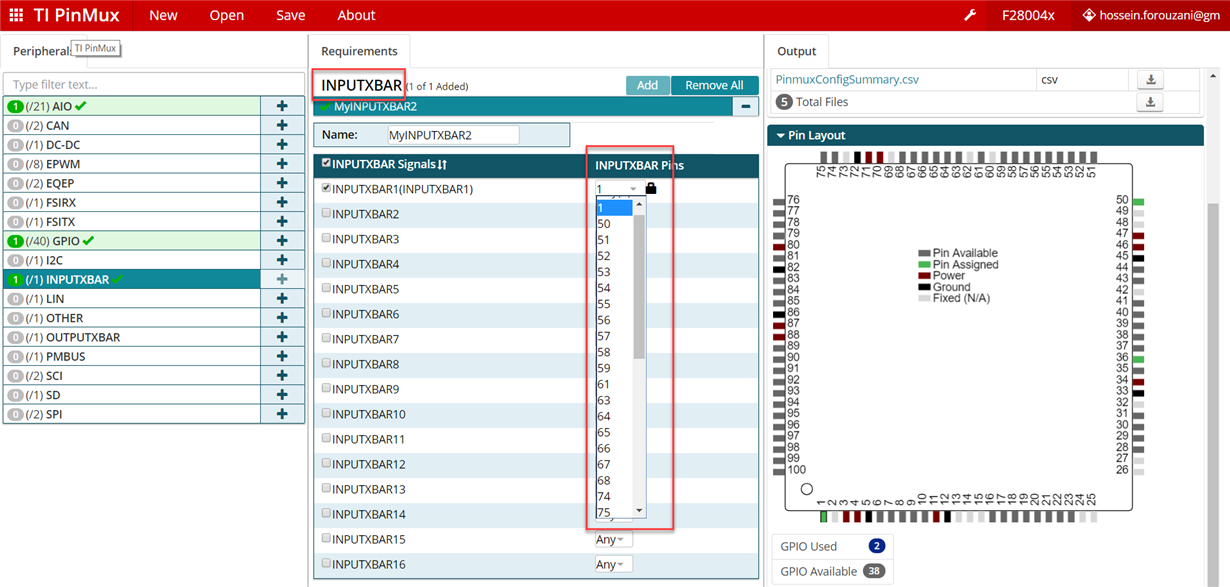Other Parts Discussed in Thread: LAUNCHXL-F280049C
Is it possible to connect an AIO pin to the input x-bar? The reference manual indicates that it is possible but there is no way to assign an AIO pin to the input x bar in TI PinMux tool.
The technical ref manual (SPRUI33A–November 2015–Revised December 2017) section 8.1 says:
The analog signals on this device are multiplexed with digital inputs. These analog IO (AIO) pins do not
have digital output capability. They are assigned to a single port:
• Port H consists of GPIO224-GPIO247
Same manual section 9.1 says:
The Input X-BAR has access to every GPIO and
can route each signal to any (or multiple) of the IP blocks previously mentioned.
TI PinMux input X bar pin number pull down menus do not show any of the AIO pins.
Thanks




